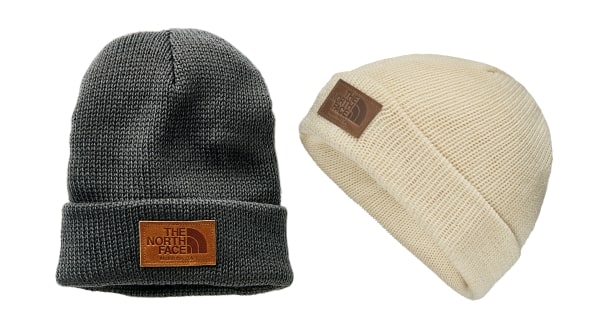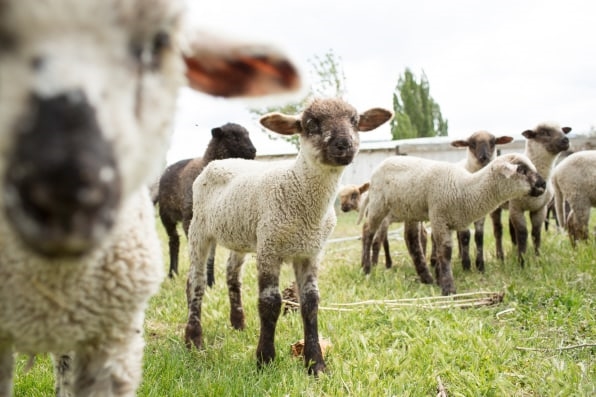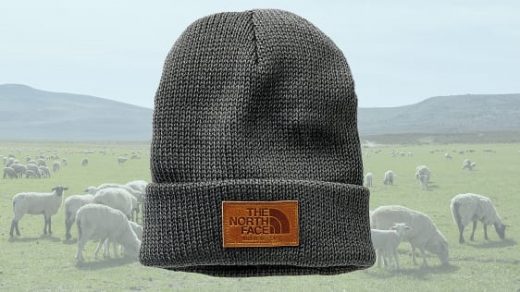This “Climate Beneficial” Wool Hat Comes From Carbon-Positive Sheep
 By Adele Peters
By Adele Peters
At the southern end of the Surprise Valley on the border of California and Nevada, Bare Ranch looks essentially like it did in the early 1900s: sheep and cattle grazing on broad fields under a backdrop of mountains. But because of some subtle changes, the ranch now produces what’s being marketed as “climate beneficial” wool.
The wool–which The North Face is using in a new beanie with the tagline, “Warm your dome, not the globe”–is produced in a way that allows the ranchers to sequester large amounts of carbon as they raise sheep. In a year, Bare Ranch’s methods will sequester around 4,000 metric tons of CO2, offsetting the emissions from roughly 850 cars.

“I like to think of the carbon farming and the climate beneficial work that we’re doing now as a change of thought,” says Lani Estill, rancher at Bare Ranch. “So instead of doing things normally–obviously, we’re raising sheep the same way that it’s been done for hundreds of years–we also think about the soil and the land when we’re making decisions.”
Fibershed, an organization that also focuses on regional textile production (growing and processing fibers near where they can be manufactured into clothing and eventually sold), reached out to the ranch as it researched California producers. Then the organization, with funding from California-based The North Face, helped the ranch develop a “carbon farming” plan.
In a sense, all farming is “carbon farming,” because plants suck up CO2 from the atmosphere. But while many farms also become a source of emissions–both from things like fertilizer use and from poorly managed soil–managing ranches in a specific way can make them not only carbon neutral, but carbon negative (or carbon positive, depending on the phrase you prefer): They remove more carbon from the air than they produce.

Many of the changes are straightforward. In the past, when a crop like alfalfa needed to be replanted after several years, the ranchers at Bare Ranch would till the soil and leave it fallow and open to the air before planting again. “All that time you’ve got bare land, carbon’s just going back up into the air, and you don’t want it there, you want it in the soil,” says Estill. Last summer, the ranch planted a different short-term crop, sorghum, rather than leaving the soil bare, and let sheep graze.
When the ranchers planted a crop of winter wheat, they added daikon radishes to the field, which help enhance the soil more. Layers of compost help store more carbon at the ranch. Four miles of trees, currently being planted (with plants to support pollinators underneath), will store more carbon as they grow. Carefully managing where sheep graze, rotating between fields, also helps sequester more carbon.
For The North Face, which had learned from life-cycle analyses that most of the environmental impact of its products happens in production and manufacturing, working with the wool was an obvious choice. “Generally, in trying to be more sustainable, you are reducing the environmental impact, or being ‘less bad,’” says James Rogers, senior sustainability manager, The North Face. “This is an example of actually being ‘more good,’ where the product is actually part of the solution. For the ranching stage of the production, we’re actually sequestering more carbon than is emitted.”
Manufacturing with the wool still has some impact; The North Face hasn’t yet completed a full life-cycle analysis of the new hat. But when Fibershed studied the potential for combining this type of ranching with sustainable manufacturing–for example, processing facilities that run on solar, wind, and geothermal energy–it calculated that it would be possible to produce clothing with a total impact on the climate that is positive. The organization is pushing to create the renewably powered processing facility.
The North Face plans to expand its line with the new wool in 2018, though it sees a need for more ranchers to supply the material. “I think there is going to be a challenge to scale this program,” says Rogers. “In order to do that, we do need to see this idea grow more broadly, and we need to see not only other growers or ranchers adopting these practices, but other brands pushing for it as well and asking for the sourcing. We need to send that message from both sides of the supply chain.”
Fibershed now gets frequent requests from other ranchers who want to do the same thing. “They’re saying if we can do this . . . if we can become more productive while drawing down carbon and be more connected to direct markets, it’s three wins for them,” says Rebecca Burgess, executive director of Fibershed.
The key, she says, is market demand; while The North Face says that the new climate-friendly beanie, which went on sale in September, is now its top-selling beanie, overall demand for this type of product will determine its success. “We are at this critical point of we need to grow, and people want to grow,” she says. “I think it’s enthusiasm that’s needed at this particular juncture.”
(30)



